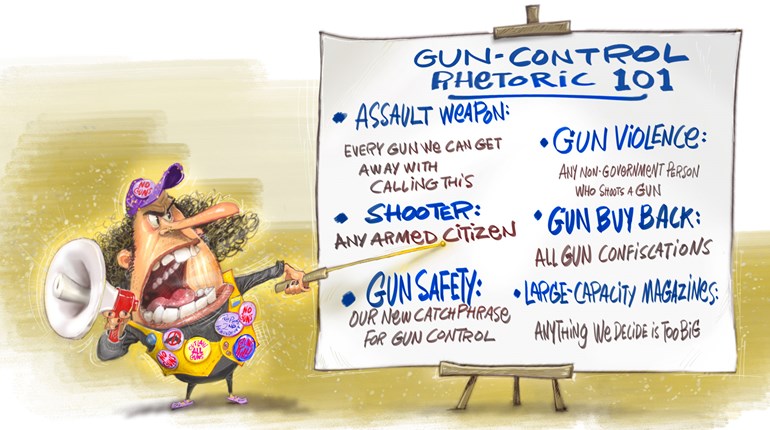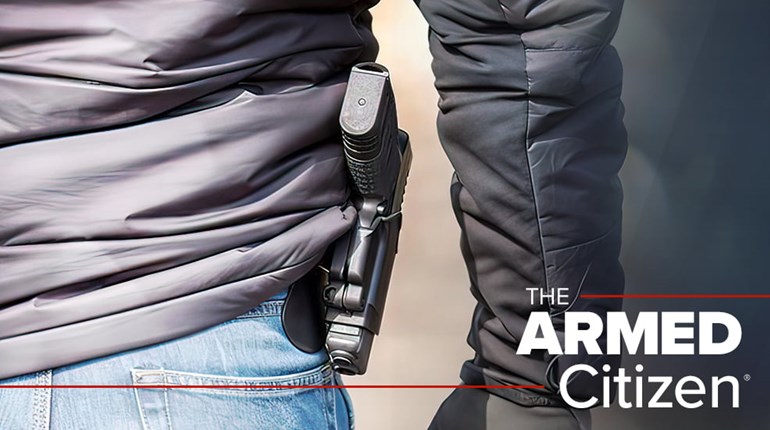
The ink was barely dry on the U.S. Supreme Court’s 2008 District of Columbia v. Heller decision before lower courts began deliberately and systematically undercutting it. Judicial defiance has ranged from misreading the scope of the right enunciated by Heller to undermining decades of fundamental-right jurisprudence. For over a decade, attorneys sought only a fair-import application of Heller’s history-based analysis, but, with rare exceptions, instead faced massive resistance from judges who disfavor the Second Amendment.
A few cases illustrate the extent of this judicial activism. In upholding New Jersey’s very restrictive may-issue concealed-carry licensing regime in 2013, the Third Circuit Court of Appeals held that public carry was not protected by the Second Amendment because New Jersey’s “justifiable need” requirement for concealed-carry permits was a “longstanding” regulation and thus presumptively lawful under Heller. But the regulation was not enacted until 1924, and the court ignored that New Jersey allowed open carry until 1966.

The court then performed an alternative analysis under what it termed “intermediate scrutiny”—theoretically a heightened level of judicial review for constitutional rights. Under that test, the state bears the burden of showing that, to quote the Third Circuit, a given regulation does “not burden more [conduct] than is reasonably necessary” in attempting to achieve its stated end. Yet the court relied entirely on the “predictive judgment of NJ’s legislators” that limiting issuance of carry permits would enhance public safety. The judgment that more lenient carry laws led to more crime was based, to quote the dissent, on “no evidence at all.” Not one shred. The majority relieved the state from its burden of proof on the ground that when New Jersey passed its statute, Heller had not yet declared the Second Amendment to be an individual right, so the legislature could not have been expected to know that it would have to justify its law.
In a later case upholding Maryland’s ban on so-called “assault weapons,” in addition to deploying hostile and vitriolic language, the Fourth Circuit misstated Heller while demonstrating its ignorance of firearms. The court opined that Maryland’s ban was valid, in part, because Heller struck down only a ban on handguns—ignoring that Heller also struck a ban on keeping operable long guns in the home. The Fourth Circuit also decided that some “assault weapons” could be banned because they were designed with “spray-firing” in mind. This is, of course, false. The weapons on Maryland’s list were intended to be aimed. “Shooting from the hip” is the disparaging term used to describe the rash act of discharging a firearm without aiming. These judges lacked rudimentary knowledge about the function of the firearms at issue.
But the Fourth Circuit truly displayed its philosopher-king-style elitism in referring to the banned firearms as “weapons of war” while upholding a part of the law that allowed retired law-enforcement officers to keep their duty AR-15 rifles upon retirement. The Maryland State Police and the U.S. Marshals who protect federal judges use AR-15s as their duty rifles. If these rifles were truly “weapons of war,” they should not regularly be used by police or the judges’ personal guards. The Fourth Circuit thus implicitly held that judges’ and retired officers’ lives are worth protecting with the best-available tools (they are), but that the rest of ours are not.
These egregious examples are not exceptional. In this new political climate, bills like H.R. 127—a laundry list of gun controls that includes a ban on common ammunition and magazines capable of holding more than 10 rounds, mandatory liability insurance for gun owners and more—must move no further than introduction. Civic engagement that works toward the election of legislators and executives who will both pass constitutional laws and nominate and confirm judges who will apply the law rather than bend it to their will, is critical.
The latter was arguably President Donald J. Trump’s greatest achievement. It may become the longest-lasting and most-important part of his legacy. In addition to three U.S. Supreme Court justices, he appointed 54 circuit court judges and 174 district court judges. Many of these judges have already made their mark on the Second Amendment.
Trump’s most high-profile appointments were the three justices who now make up one-third of the U.S. Supreme Court. Each justice has a record as a Second Amendment defender.

Justice Neil Gorsuch joined a dissent from a denial of certiorari in 2017. He suggested that the Second Amendment protects the right to carry arms in public. He stated that “the time has come for the Court to answer this important question definitively.” In a more-recent case, he joined a dissent by Justice Samuel Alito, finding “cause for concern” over “the way Heller has been treated in the lower courts.” In that case, Justice Gorsuch would have held New York City’s law prohibiting the transportation of firearms out of the city unconstitutional, but a majority of the Court declined to address the constitutionality of the law.
Before joining the U.S. Supreme Court, Justice Brett Kavanaugh served on the D.C. Circuit, where he filed a dissent arguing that the District’s ban on magazines greater than 10 rounds violates the Second Amendment. Once on the U.S. Supreme Court, he joined Justice Clarence Thomas’s dissent from a denial of certiorari, arguing that the Court should hear a case involving the right to carry firearms outside the home. He expressed concern in another case that “some federal and state courts may not be properly applying Heller,” and urged his colleagues to “address that issue soon.”
Justice Amy Coney Barrett, while on the Seventh Circuit, heard a challenge to the federal firearms ban for felons brought by a nonviolent felon convicted of mail fraud. Barrett dissented from the majority opinion upholding the ban, and conducted a thorough historical analysis ultimately leading to the conclusion that nonviolent criminals still possess Second Amendment rights.
Many of Trump’s circuit court appointees have also made their mark. Perhaps the biggest win for the Second Amendment in recent years was the Ninth Circuit striking down California’s ban on magazines over 10 rounds in August 2020. Judge Kenneth Lee, a 2019 appointee, authored the opinion. The court provided a thorough historical analysis of repeating arms starting in 1580, making clear that “multi-shot firearms were not novel or unforeseen inventions to the Founders.”
The court proceeded to apply strict scrutiny—the highest level of heightened scrutiny, which few courts have been willing to apply to gun-control laws. Finding that the banned magazines are not disproportionately used in crimes—including mass-shootings—the court concluded that a blanket ban on the entire population and the confiscation of millions of magazines were unreasonable, and would fail even under the more-lenient intermediate scrutiny.
A couple of weeks after the Ninth Circuit’s decision, the Third Circuit upheld New Jersey’s magazine ban for the second time. The Third Circuit first considered New Jersey’s magazine ban in 2018. At that time, the court determined that because 11-plus-round magazines “are not well-suited for self-defense,” and because New Jersey’s ban “reasonably fits the State’s interest in promoting public safety,” the ban did not violate the Second Amendment.
Judge Stephanos Bibas, a 2017 Trump appointee, dissented. He reminded the majority that “[t]he Second Amendment is an equal part of the Bill of Rights,” and that “[w]e may not water it down and balance it away based on our own sense of wise policy.” Bibas argued that strict scrutiny should apply “to any law that impairs the core Second Amendment right to defend one’s home,” and he determined that even under intermediate scrutiny, the magazine ban would fail because magazine bans have no apparent impact on mass shootings.
New Jersey’s magazine ban returned before the Third Circuit in 2020, but a two-judge majority of the three-judge panel held that it was bound by the previous decision and declined to opine on the law’s constitutionality. Judge Paul Matey, a 2019 appointee, dissented. Providing one of the most-thorough historical analyses in any Second Amendment case to date, he would have held the magazine ban unconstitutional. He covered the history of repeating arms and magazines capable of holding more than 10 rounds from the start of the sixteenth century through to the many millions of magazines owned by Americans today.
Judge Matey further explored the lack of historical regulations on magazine capacity and determined that “magazines are arms protected by the Second Amendment and an act limiting magazine capacity to ten rounds burdens the Appellants’ Second Amendment rights.” Like Judges Lee and Bibas, Judge Matey would have applied strict scrutiny, but determined that the magazine ban would fail even intermediate scrutiny. He found neither evidence that the ban would effectively reduce fatality in gun crimes, nor evidence explaining “why eleven rounds is too many while nine remains fine.”
Trump appointees have changed the debate on prohibited persons. With the ever-expanding scope of laws that constitute felonies, it is increasingly important for courts to determine which felonies should result in the permanent deprivation of Second Amendment rights; for example, as Judge Bibas pointed out, opening a bottle of ketchup at a New Jersey grocery store and putting it back on the shelf is a felony that will result in a lifetime firearms ban under federal law.
Judge Bibas, like Justice Barrett, believes that nonviolent felons retain their Second Amendment rights. He dissented from an opinion in which a two-judge majority upheld the federal ban as applied to someone who willfully made false statements on a tax return. Conducting a historical analysis, Judge Bibas found that only dangerous persons may be denied the right to keep and bear arms.
Several Ninth Circuit Trump appointees indicated that they would also restore gun rights to someone who had forfeited them under the broad scope of the federal law. After a three-judge panel upheld a lifetime ban on someone involuntarily committed for mental-health treatment in 1999, at the age of 17, five Trump appointees (Judges Collins, Bumatay, VanDyke, Bress and Bennett) voted to rehear the case because they did not believe that the government justified the ban.
After the Fifth Circuit upheld the federal ban on interstate handgun sales, the court voted whether to rehear the case en banc (i.e., before a full court). Of the 15 judges on the court, seven voted for rehearing—one shy of the eight votes needed. Every Trump appointee voted in favor. Of those, Judges Willett and Ho drafted dissenting opinions.
Willett, noting that the Second Amendment has been referred to as “the Rodney Dangerfield of the Bill of Rights,” emphasized that “[t]he Second Amendment is neither second class, nor second rate, nor second tier.” Judge Ho argued that the law was unconstitutional because plenty of less-restrictive alternatives existed for reducing violence.
Arguably the most-important issue for the future of the Second Amendment is the test that courts apply in evaluating Second Amendment challenges. Most courts have invented a two-part test to evaluate gun laws, in which they balance the government’s public-safety interests against the people’s interest in the right to keep and bear arms. Almost always, alleged public safety wins and gun rights suffer.
Many of Trump’s appointees, however, have advocated for a test based on text, history and tradition. This test preserves the original understanding of the Second Amendment and makes it more difficult for judges to impose their personal preferences through interest-balancing tests. So far, Judges Matey (3rd Cir.), Ho (5th Cir.), Willett (5th Cir.), Duncan (5th Cir.), Collins (9th Cir.), Bumatay (9th Cir.) and VanDyke (9th Cir.) have all demonstrated a preference for this test.
After a decade of second-class treatment, the Second Amendment is finally receiving, from some judges, the fundamental-right treatment it deserves. It is more important than ever to ensure that the progress of the last four years is not undone.
George A. Mocsary is a professor of law at the University of Wyoming College of Law and an adjunct scholar at the Firearms Policy Coalition; and Joseph Greenlee is the director of constitutional studies at the Firearms Policy Coalition.

































